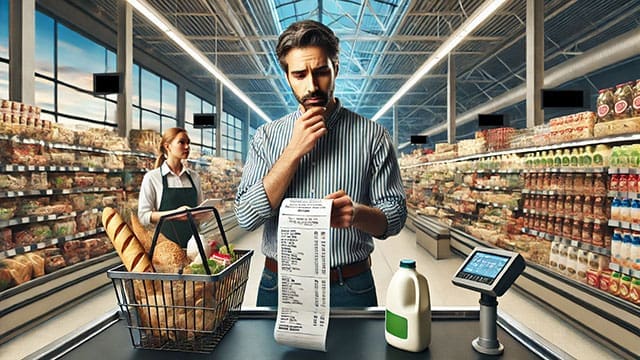Mark Carney is just hiding the cost of the carbon tax. Its economic impact on Canadian consumers remains the same

For interview requests, click here
Prime Minister Mark Carney has signed an executive order eliminating the so-called “consumer carbon tax,” leading many Canadians to believe they will no longer feel its financial burden. But make no mistake—the most damaging aspect of the carbon tax for our food economy remains intact.
Canada’s carbon tax was introduced to discourage fossil fuel consumption and reduce emissions. The original policy placed a tax on carbon-based fuels, with revenues partially rebated to households to offset higher costs.
Carney’s policy eliminates the direct carbon tax at the consumer level but keeps carbon pricing intact for large industrial emitters—effectively shifting costs away from consumers’ direct fuel purchases but maintaining them at the production and distribution level. While this version of carbon pricing may be less visible to consumers, its economic impact is no different. Most Canadians support strong environmental policies that promote sustainability, but if those policies undermine food affordability and competitiveness, they warrant serious scrutiny.
 Carney’s “hidden” carbon tax will still squeeze Canadian consumers. |
| Recommended |
| Carney’s carbon tax scheme is a costly trick on Canadians
|
| Higher home heating bills? Thank the carbon tax
|
| PBO confirms carbon tax hitting Canadians hard
|
This shift in taxation is reminiscent of Canada’s old Manufacturer’s Sales Tax (MST), which was replaced by the Goods and Services Tax (GST) in 1991. The MST was embedded at the manufacturing level, making it a hidden cost that inflated retail prices without consumers realizing they were paying a tax. Similarly, the “shadow” carbon tax quietly accumulates throughout the supply chain, ultimately raising consumer prices in a less transparent way. While the consumer no longer sees a direct carbon tax, industries still absorb these costs and pass them along through higher prices—which effectively amounts to a hidden tax.
At every stage of the food supply chain—transportation, milling, distribution, and retail—the carbon tax compounds, inflating prices before products even reach store shelves. Farmers pay carbon taxes on fuel, fertilizers, and equipment—costs that are further compounded by the GST. Despite government rebates, production costs continue to climb.
The impact doesn’t stop there. A trucking company transporting wheat to a mill pays carbon taxes on fuel, which gets passed on through shipping fees. The mill incurs additional costs for electricity and operations, which are then built into the price of flour. As the flour moves through distribution, into bakeries, and onto grocery store shelves, each step adds another layer of carbon tax. By the time a loaf of bread reaches the consumer, multiple hidden costs have accumulated, increasing the final retail price.
Farmers paying carbon taxes on fuel and other inputs see their production costs rise, a burden that trickles down through wholesalers, grocers, and, ultimately, consumers. While politicians highlight the removal of the direct carbon tax at checkout, the real financial strain builds throughout the supply chain—something Carney’s policy does little to change.
The burden isn’t just theoretical—it is already driving significant shifts in Canada’s food industry. The impact of the carbon tax on food prices is even more evident when analyzing the growing disconnect between wholesale and retail food prices. Since the carbon tax was introduced at $20 per metric tonne in 2019, Canada’s agri-food sector has struggled with declining competitiveness. The narrowing gap between wholesale and retail prices suggests that grocers are increasingly forced to import food from abroad to mitigate costs.
Since 2022, the effects of the annual carbon tax hike have become even more pronounced. Wholesale food prices temporarily outpaced retail prices, forcing grocers to absorb additional costs. This year, another $15 increase is scheduled for April 1, further amplifying cost pressures that will inevitably trickle down to consumers.
Despite years of rising costs for farmers and consumers, Ottawa has yet to produce a single study proving that the carbon tax has improved environmental outcomes. Worse still, no assessment has been conducted on its impact on food affordability—a glaring oversight for a policy with such wide-reaching economic consequences. Many academics have called it a blind-sided policy—one that weakens our economy and erodes competitiveness without measurable proof that it effectively addresses climate change.
While carbon pricing aims to address climate change, economic policies must balance environmental objectives with economic stability. Without an alternative strategy, simply shifting the tax burden onto industries could still raise costs for consumers in indirect ways.
With a new prime minister in office and potentially a new government on the horizon, it is time for Ottawa to facilitate a real, evidence-based debate on how best to tackle climate change without compromising food security and affordability. There are better solutions than the carbon tax—or its “shadow” equivalent—regardless of what Prime Minister Carney chooses to call it.
Dr. Sylvain Charlebois is a Canadian professor and researcher in food distribution and policy. He is senior director of the Agri-Food Analytics Lab at Dalhousie University and co-host of The Food Professor Podcast. He is frequently cited in the media for his insights on food prices, agricultural trends, and the global food supply chain.
Explore more on Carbon tax, Federal taxes, Trudeau government, Cost of living, Agri-food
The views, opinions, and positions expressed by our columnists and contributors are solely their own and do not necessarily reflect those of our publication.
Troy Media is dedicated to empowering Canadian community news outlets by providing independent, insightful analysis and commentary. Our mission is to support local media in fostering an informed and engaged public by delivering reliable content that strengthens community connections, enriches national conversations, and helps Canadians better understand one another.


